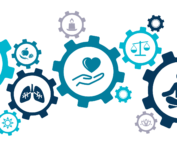It’s an unfortunate truth, but in many organisations L&D and HR often don’t work well together. Despite the fact that the two functions are traditionally working towards the same goal, there remains a great deal of discord between the two.
This may be because they traditionally deal with different areas of the employee lifecycle; HR manages the commencement and conclusion of employment, while L&D is brought in to focus on the middle section; development. However, in reality these represent different parts of an employee’s experience in the business, but ultimately they all relate to one thing: the success of the employee and how this impacts the business.
In many organisations L&D teams continue to get bogged down with the minutia of supporting a workforce in striving for success. Dealing with individual programmes, training plans and the day to day admin side of things far too often distracts L&D from being able to play a more powerful role in driving business growth. In HR issues such as recruitment, on- boarding and grievances tend to take up the majority of the time, and as with L&D there is less opportunity for them to have a proactive input into the strategic direction of a business. However, if used in the right way L&D and HR can be the cornerstone of success in an organisation, but rarely are they treated in such a way. The ability of a business to succeed is directly impacted by its workforce and their ability (and willingness) to perform to a high standard, and this standard of working can be influenced by both L&D and HR; yet despite this they are still often seen as a remedy for ills rather than a proactive way to drive a business forward. A shift in focus is therefore needed in many organisations towards acknowledging the powerful impact that L&D and HR can have and how they can actively contribute to making a business successful. By utilising L&D and HR effectively a business can ensure it has all the necessary skills, knowledge and capabilities in place to achieve its long term vision, and ensure the workforce is empowered to reach their true potential.
How L&D and HR can impact business success
Supporting L&D and HR in building robust relationships and working closely together is especially important for workforce planning as both will have a prime role to play. While they are typically viewed as two entirely separate entities, the truth is that neither can work effectively in isolation, especially when it comes to developing a strategically focussed workforce management plan. Both specialities will be heavily involved in making sure a business has all of the necessary skills embedded to ensure success, and if they can find a more effective way to work in partnership it will make this a far easier process. By teaming up HR and L&D can pool their resources to gain a better understanding of the present situation; they can devise talent maps and create a clear account of where different skills currently reside, and identify where the gaps are. Once this has been accomplished, the two teams can then consult on the best approaches to fill these gaps. In some cases this may involve internal development and/or progression plans; in other situations it may require external recruitment. However it will only be through extensive exploration of the situation and in depth consultation that this can be established for certain.
In addition to this there may also be scenarios in which a department is experiencing markedly low performance from certain individuals or teams. In such cases typically underperforming individuals will be required to undergo additional training to address any knowledge gaps, and if this doesn’t resolve the problem they may face HR intervention such as disciplinary proceedings. However rather than L&D or HR attempting to address the situation from independent and, often opposing, viewpoints, by working together a more effective and fair approach may be possible. For example a poorly performing employee may be supported by HR and L&D in tandem where a discussion can be had about whether redeployment may be a suitable option, and how specific training options may make this viable. Alternatively they may be able to work in partnership to offer targeted support in addressing any extenuating circumstances such as existing stress; HR can offer support in workplace management, while L&D can be employed to offer training in areas such as time management, resilience or conflict management. This collaborative approach ensures that all aspects of a problem can be addressed simultaneously, rather than piecemeal, allowing for more effective and positive outcomes for the individual, and less disruption to the team they work in.
Other examples of where L&D and HR should work in close alignment include supporting high performing employees to reach their potential, or helping managers to become more effective. This is especially important as a number of reports have been published recently highlighting the UK’s need for more robust leadership development; it seems many organisations are struggling to develop their leaders to their maximum efficiency and as a result this has indirectly (and directly in some cases) changed the focus of many L&D departments, but it also requires active involvement from HR too. In order for L&D to be able to offer the most effective development pathways for leaders, HR need to offer support in implementing these processes and gaining support from senior leadership and line managers.
Another key area where L&D and HR would benefit from joining forces is in becoming more effectively involved in business strategy. This is something that comes up time and again, and yet still is rarely put into effect in most organisations. Traditionally HR has a much higher degree of involvement in organisational strategy yet L&D’s involvement is absolutely paramount to business success; if the L&D function doesn’t know what the business is aiming to achieve in the coming months/years then how can they effectively support it? The answer is that they can’t, so before anything else happens, L&D needs to find a way to become involved in the strategic side of business and people development, and partnering with HR could be the most effective way to do so. Whether L&D is an active participant in the discussions (which they ideally should be), if they are working closely with HR, who usually are part of the discussions, they at the very least have a direct source of information they can use to inform their operations.
Furthermore, both departments will have a much greater scope for effecting change by supporting each other, and it will ultimately help ensure the business strategy can be achieved if all resources are brought together and shared.
While some view them as entirely different functions, the truth is that L&D and HR are really two sides of the same coin. Both have a remit to support employees, although they may take different approaches to do so. It is only by embracing this idea and working together to share knowledge, expertise and resources that a business can most effectively support the most important pillar of its success: its people. But before this can happen, the two teams need to be willing to acknowledge this fact for themselves, and find more effective ways of working in partnership, to become a truly collaborative force to be reckoned with.
Read Next
The Importance of Resilience in the ‘Always On’ Era
Ignorance is bliss so they say, but in this day and age it’s hard to be ignorant of much. With round the clock news and social media updates, constant access to phones and the [...]
Who’s Taking Care of Managers?
A lot of responsibility is laid at the door of managers when it comes to looking out for their employees – they are asked to support individuals with job performance, professional development, career progression, [...]
What’s L&D’s Role in Employee Wellbeing?
A recent CIPD report stated that wellbeing is suffering as a result of the pandemic, but their wellbeing is barely (if at all) taken into account when business decisions are made. This is surprising, [...]
Out With Stress for National Stress Awareness Week
National stress awareness week is upon us again, and we wanted to explore stress from a positive angle this year. After all, most of us know about the negative effects of stress; poor concentration, [...]
Mental Health and Emotional Flexibility
In the past I have taken part in a wide variety of activities to raise awareness of the importance of Mental Health in the workplace, activities such as ‘Chimp Management’, resilience (learn about your [...]
Developing Mental Toughness and Resilience
Mental toughness is essential for navigating the trials and tribulations of our everyday lives; stress at work, relationship difficulties or physical ailments. In truth you never know when you’ll need to be resilient, and [...]






